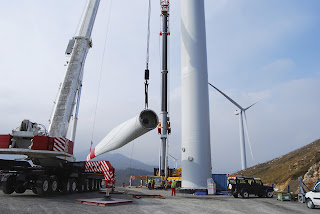On the one hand, there is resistance to salt water. Steel is very difficult to protect against corrosion and even then the construction still has to be serviced regularly and very time-consuming and expensive. Floating structures should have a lifespan of at least 100+ years in the future.
With normal concrete structures the problems are similar, if not more serious. Once extremely corrosive seawater has penetrated the steel reinforcement unnoticed, the repair effort is enormous. In addition, for this very reason, the construction must be extremely thick-walled. An anti-corrosion coating makes the entire construction additionally expensive and here too the entire construction must be checked regularly in short periods of time.
Special UHPC concretes have extremely high strength values compared to normal concretes, they are waterproof after a wall thickness of a few millimeters and are absolutely salt water resistant. Some of our UHPC binders are also extremely temperature-resistant (up to max. 1200°C) and they are very good wear-resistant (resistant to wear and tear caused by moving ice floes). Due to the high strength values, structural elements can be optimized or minimized in terms of size and weight.
UHPC concrete will be the much cheaper material for the required service life.
As developers and producers of high-quality UHPC binder materials, we want to focus on three future projects:
1st project
Floating work platforms for energy generation and storage.
All the major offshore wind farm operators worldwide are currently planning not only to generate energy with wind turbines, but also to use this energy to produce hydrogen on site in the wind farm. Solar systems on the platforms should contribute to additional energy generation. The platforms can be manufactured in several standard segments and connected to form a network at sea. These platforms can be made from very lightweight UHPC. This UHPC material can be self-floating.
2nd project
Floating living and working platforms, artificial islands for the coastal area and for the open sea. Platforms
for residential buildings, hotels, schools, hospitals, office buildings and production facilities.
Please see the corresponding article below.
3rd project
Offshore missile launch sites
There are various ideas for implementing this. In Germany, launch sites on ships for small and medium-sized rocket systems for satellite transport are being considered and are already being planned. Elon Musk is planning rocket launch sites for converted former oil production platforms. In all of these plans, UHPC could contribute to intelligent, lasting solutions. Ships were built from UHPC more than 20 years ago and
offshore platforms with UHPC were significantly improved structurally and statically.
Please see the corresponding article below.
WPE DK International
Phone: 0049 176 601 73146
E-mail: ber@wpe-dk.dk
Homepage: www.wpe-dk.com

















































